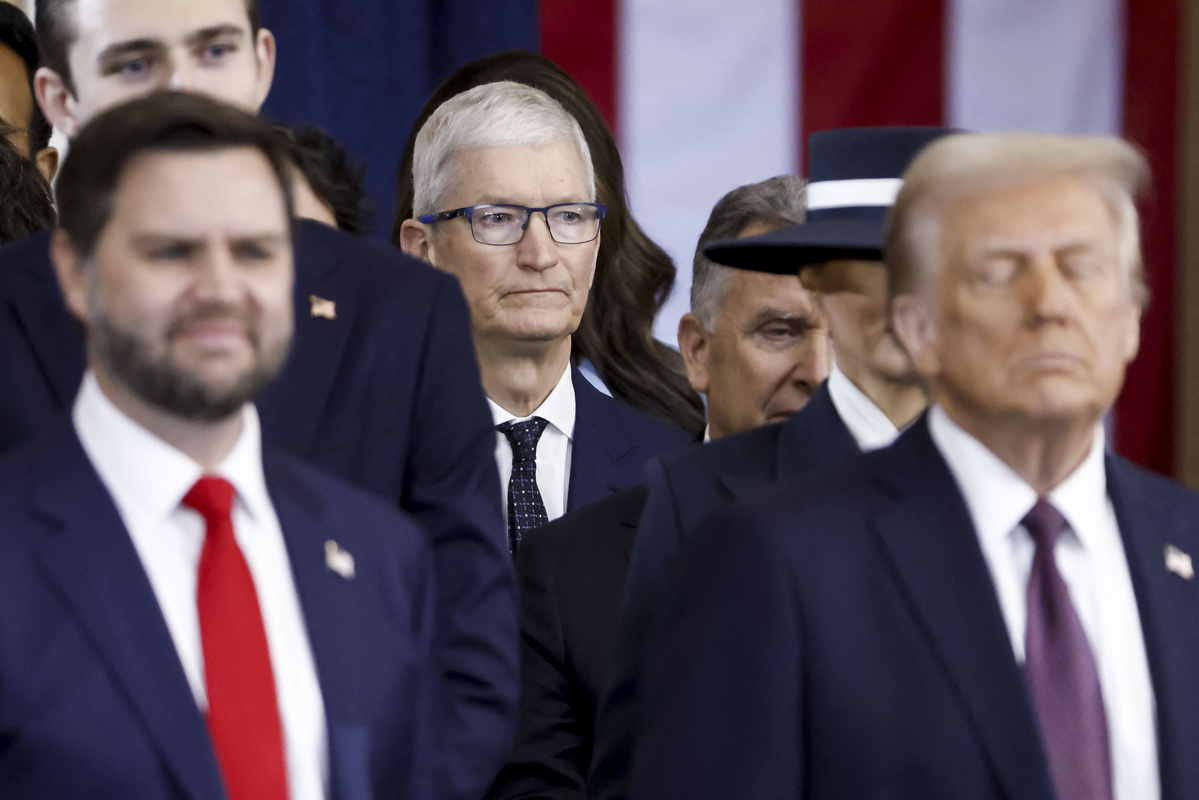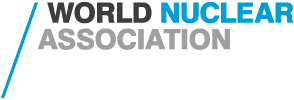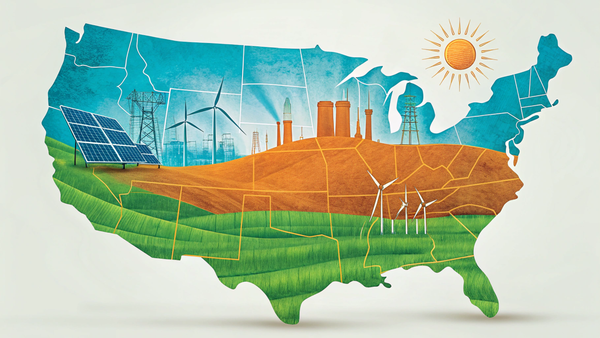Advancing Energy Goals through Political Turbulence and Funding Uncertainty
Stable Policy, funding, and advocacy are critical to the future of clean energy, but are at risk. Where do we go from here?

Developments in the Energy Sector
The political upheaval of 2025 has disrupted the energy sector, thereby unsettling expectations and prompting unpredictable responses from key players. Recent reports, like the four articles addressed in this roundup below, highlight shifting priorities among corporate climate advocacy, philanthropic investment strategies, and governmental policy. While some companies demonstrate vulnerability by retreating from active climate lobbying, others are continuing to redirect their efforts by, in this case, backing the expansion of reliable and scalable nuclear energy. Funding volatility, exemplified by Bill Gates' Breakthrough Energy pulling financial support from clean energy initiatives, underscores the risks of clean energy advocacy to rely on and proliferate around single investors. Meanwhile, clean energy’s economic appeal is reshaping partisan positions, with Republicans increasingly backing tax credits. These intertwined forces—corporate realignments, financial volatility, and evolving political incentives—underscore the need for stable policy and diverse funding to sustain the clean energy transition.
Deeper Reading in the News
Corporate America's step back from active climate advocacy, as detailed by E&E News, demonstrates how quickly private-sector commitments can shift in response to changing political climates. Major corporations like Apple, Walmart, and Siemens, previously vocal supporters of initiatives aligned with the Paris Agreement, have pulled back following the political swing in Washington. This withdrawal emphasizes the instability inherent in relying on corporate advocacy alone to drive long-term climate action.

In sharp contrast, a separate corporate movement has emerged in support of expanding nuclear power, as highlighted by the World Nuclear Association. Companies including Amazon, Google, and Meta have committed publicly to tripling global nuclear capacity by 2050. This strategic endorsement recognizes that immediate costs alone cannot dictate energy choices. Instead, considerations of scalability, reliability, and continuous clean energy supply must shape investment decisions. Nuclear power, therefore, becomes pivotal in addressing these broader strategic needs, emphasizing reliability alongside environmental goals.

The abrupt reduction in funding from Bill Gates' Breakthrough Energy, reported by The New York Times, further illustrates the fragility of clean energy initiatives dependent on single sources of philanthropic investment. The destabilization caused by Breakthrough's decision, after significant investment had shaped industry expectations, highlights the danger of relying on volatile private funding streams. This event is a stark reminder that sustained and predictable investment frameworks, underpinned by stable policy support, are essential.
Some Republican lawmakers are resisting Trump’s plan to dismantle Biden-era clean energy policies, arguing that tax credits of the Inflation Reduction Act (IRA) have spurred job growth and infrastructure in their districts. They contend that repealing these incentives would harm local economies, increase energy costs, and weaken U.S. energy security. Though GOP leadership remains largely opposed to the IRA, the political reality is shifting. With clean energy now entrenched as an economic force, the debate should not be about whether to sustain these investments, but about how best to align them with the diverse energy priorities of both parties.
Where We Go From Here
The IRA illustrates the power of stable and clearly articulated policy incentives to attract investment across a diverse political landscape. The clean energy investments it has catalyzed reinforce that energy policy need not be a zero-sum game between left and right. For conservatives, the framing of energy dominance, reliability, and affordability aligns with clean energy expansion just as much as progressive priorities on sustainability and decarbonization. The key is to ensure that these incentives are not abandoned due to shifting political winds; rather, that they are leveraged as the bipartisan opportunity that they are.
At Evolved, we track the impact of the IRA on our energy economy and the consequences of losing these policies. As shown in Figure 1, without the IRA, deployment of renewables will slow, and fossil fuel production will increase without the current policy.
Figure 1: Energy Production Under Current Policy Versus Without IRA
Natural Gas
Oil
Solar
Wind
Source: Evolved Energy Research, 2024 Annual Decarbonization Perspective
Evolved continues to demonstrate that a decarbonized future drives local economic opportunities, and lawmakers across the political spectrum are feeling these benefits in their districts.
Our energy modeling highlights this shared ground and aims to identify the best path forward in any political or energy context. We recognize that when advocacy comes only from fossil fuels, there is a thumb on the scale against widely recognized, ostensibly apolitical decarbonization goals. A clean energy solution is the solution that makes the most sense—not just environmentally, but financially and strategically for long-term energy independence and national security. We plan to continue making this case through research, data, and actionable policy insights.
A massive piece of this is diversified and stable funding, and the sudden withdrawal of Breakthrough Energy’s financial commitments has exposed significant vulnerabilities within the clean energy sector. The cessation of approximately $100 million annually in philanthropic support has left numerous clean energy organizations—entities that boosted efforts and scale specifically because of this funding—facing severe operational risks, thereby illustrating the inherent instability of relying heavily on single, private funding streams. While the intent behind Breakthrough Energy’s initiative was to accelerate progress, the unintended consequence of abruptly terminating funding demonstrates a crucial lesson: clean energy innovation and advocacy require consistent, predictable support frameworks to thrive, particularly with long-term goals.
The IRA is still law and continues to benefit Americans regardless of political persuasion. When prominent lawmakers and figures in the energy space behave as though we are in a post-policy environment, the lack of funding and advocacy that would otherwise propel the clean energy triggers a self-fulfilling prophecy of defeat. Furthermore, stripping away the incentives of the IRA will make fossil fuels appear economically advantageous because of their existing infrastructure and embedded subsidies, but this narrow view overlooks broader implications, including long-term supply stability, scalability, demand fluctuations, and increased load on the grid, not to mention the obvious component of sustainability. Transition requires investment, and that investment must come from somewhere.
Rather than retreating in the face of political opposition, those advocating for a strong, modern energy system must push forward, pressuring and building on these unlikely alliances to drive lasting policy gains. Fossil fuels will continue their agenda, arguing that coal and natural gas remain the cheapest short-term solutions. Without equal or greater advocacy for clean energy’s long-term benefits—economic, geopolitical, and environmental—policy progress will remain vulnerable.
Ultimately, achieving a sustainable energy future depends critically on persistent advocacy and coherent policy frameworks that extend beyond cost metrics alone. We at Evolved recognize the need to address the intertwined issues of supply stability, scalability, and political resilience to establish an enduring, clean energy infrastructure capable of overcoming reliance on entrenched fossil fuels and navigating the volatile nature of corporate and philanthropic engagement.







